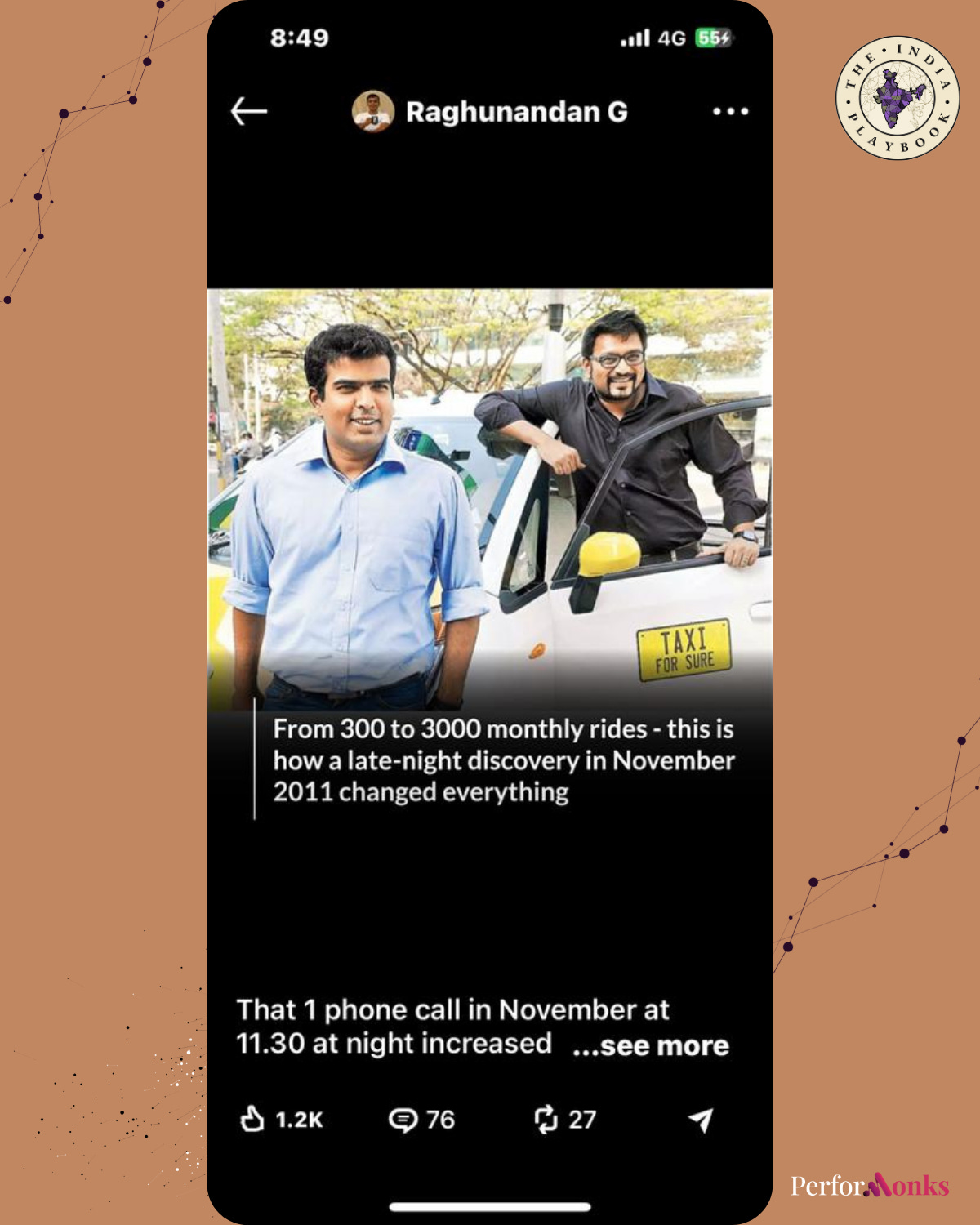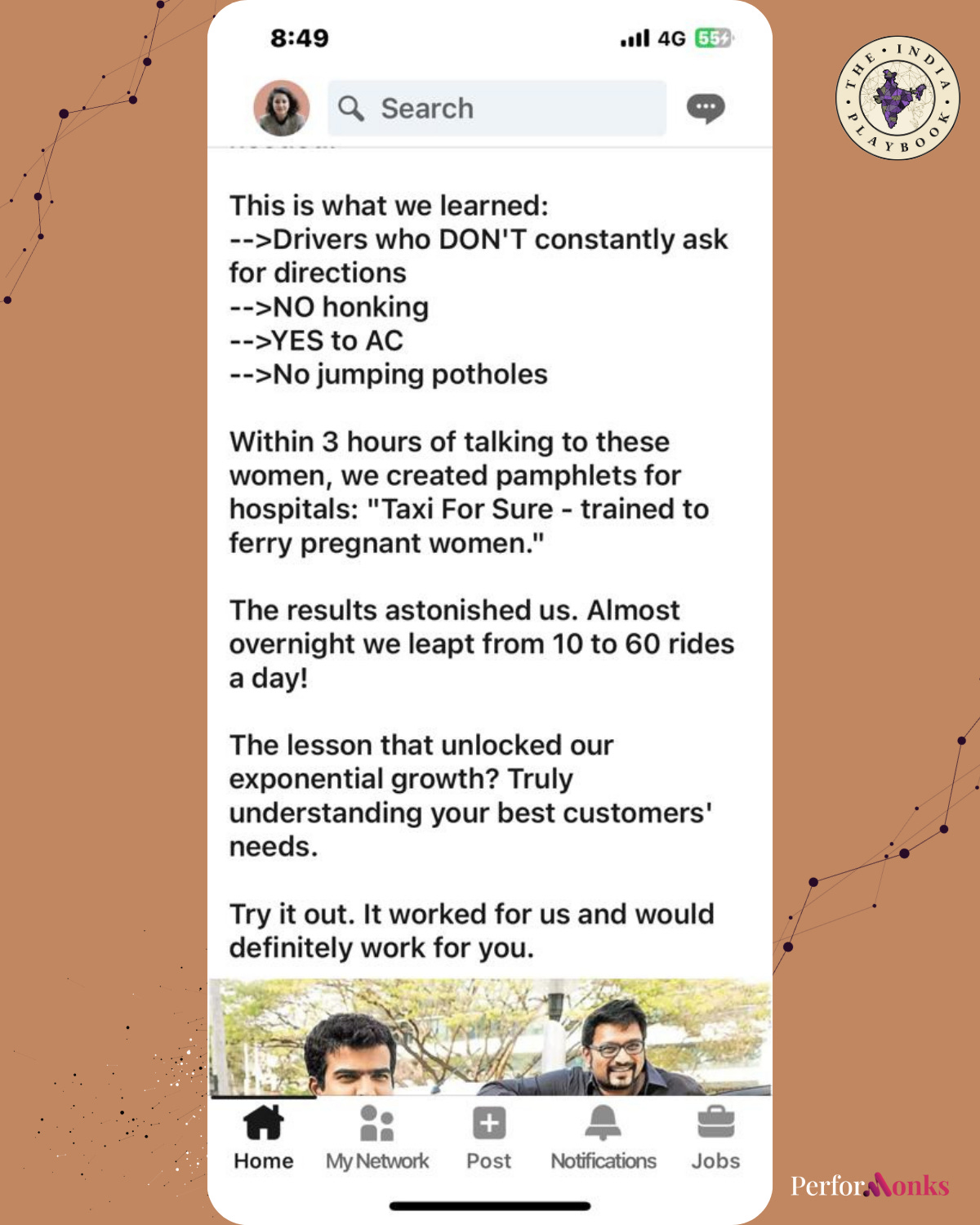Don't be everything for everyone: Taxi for sure
Taxi for Sure doubled down on serving pregnant women and grew 6X in a day
You are reading The India Playbook - a part of the Performonks newsletter. Here, I decode Category of One Strategies of Businesses in India. Read The India Playbook archives here.
Performonks shares ideas that inspire marketers to become more masterful at growing brands and navigating careers. It goes to 3,628 readers. Subscribe here.
The phrase “Category of One” is not just a new way to say “Brand Differentiation.”
It also does not mean “Unique Brand Positioning”.
It’s much broader than that.
It’s a way of thinking—a mindset.
A mindset of seeing what everyone else sees but drawing unobvious conclusions.
When many unobvious conclusions about the category, the company, and the consumers add up, the sum becomes bigger than the parts, and we get a category of one business.
That’s when a category of one business starts playing a game no one else is playing. Things get interesting, and the revenue numbers start to sing.
Even before we have an unobvious view of the consumer, we need to know who our consumer is.
One unobvious decision is to build a product for The ideal Consumer - the ‘Design Target’ - and no one else. Not for media audiences or consuming audiences. Just for one Ideal Consumer.
‘Everything for everyone’ builds blunt products
It feels safer to target everyone, especially when we are a new business.
We think that a ‘machine gun’ targeting strategy will ensure that at least someone will buy. Instead, a lack of sharp targeting accelerates product-market fit failure because by pleasing everyone, we end up building blunt features into our product.
‘Everything for everyone’ demonstrates a lack of strategic clarity
It says, “I’m so unclear about what difference I want to make in this world that I’ll build and sell anything.”
That’s why I was so happy to see this Linkedin post from Taxi for Sure last week.
Taxi for Sure discovered deep usage amongst Pregnant women and doubled down.
I know that Taxi for Sure as a company does not exist anymore. But its deep consumer engagement became an asset for Ola (who acquired Taxi for Sure).
"Ola acquired TaxiForSure only for its loyal customer base which it slowly transitioned onto its own platform by allowing them to book Ola cabs on the TaxiForSure app,”
former TaxiForSure employee [Source]
Here are three reasons why building for The Ideal Consumer gets a company to a Category of One positioning.
1) It focuses company efforts on the 3-4 features the ideal consumer wants. If done well, the product becomes best-in-class and different from anything in the market.
2) It is a signaling device. It works like a ‘bat signal’ for like-minded employees who care about the same things. Retention goes up; hiring costs go down.
3) Consumer satisfaction and NPS scores increase. Satisfied consumers spread the word and get more consumers in. Retention goes up, churn goes down.
Once it gets embedded into our psyche, designing ‘category of one’ companies becomes a mindset - see the comments on the same post - the founders plan to build for The Ideal Consumer even at their new company.
Thanks for reading!












What a wonderful way to do work. The process is science and the thinking behind it is art. Awesome Rashi for enlightening me for yet another time.